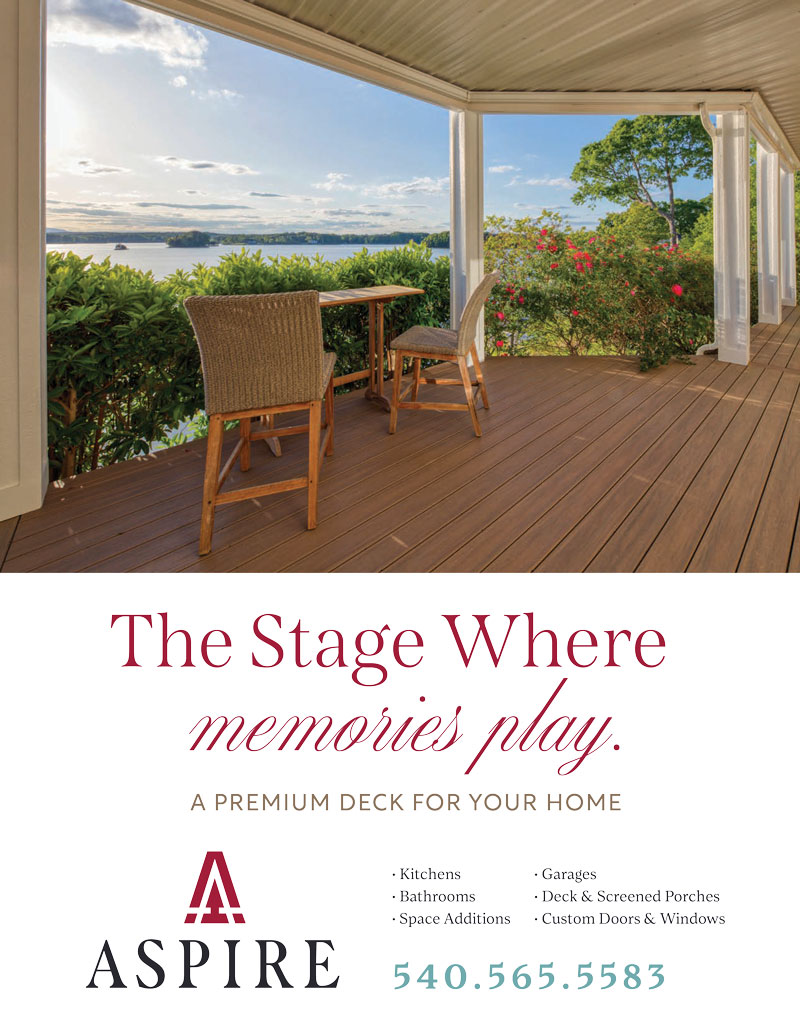Paper Swoon | For the Love of Wallpaper
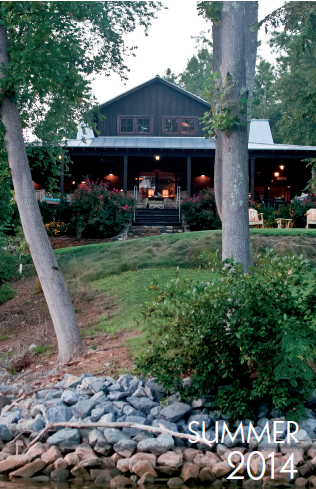
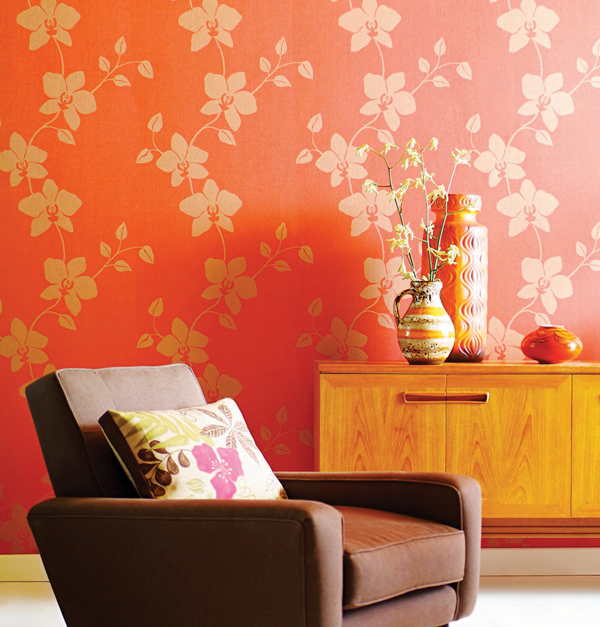
Ah, wallpaper, how I love thee; I can’t begin to count the ways. There’s no faster, can’t-fail route to dramatic space transformation than a trip down the paper trail. Wallpaper possibilities are unending, with a universe of variation available in color, texture, material and pattern: on-trend contemporary panels and murals; large-scale bold graphics; subtle and moody watercolors; traditional paisleys, dots and stripes—time-tested classics, both original and reimagined, in patterns that feel fresh still.
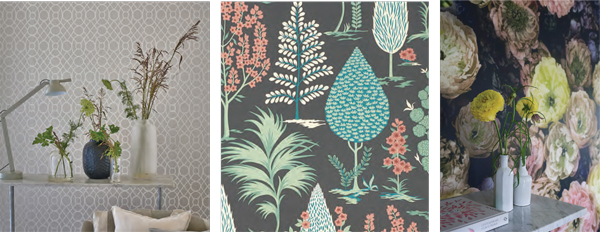
Yesterday’s paper
The earliest European block-printed wallpaper dates from the early 1400s, though the Chinese may have been using this method as early as the fifth century. According to Grove Dictionary of Art, early wallpapers were hand-painted, woodblock printed, or stenciled. Medieval and Renaissance decorators used wallpaper hangings as a stand-in for rich tapestries unattainable to any but the a-listers of the day; paper hangings presented a beautiful alternative to their more expensive and difficult-to-source textile cousins. These papers featured designs and scenes emulating woven tapestry contemporaries; they were hung loose from ceilings in the same way as tapestries and provided an extra layer of insulation to large and drafty rooms.
The end of the 18th century brought the first scenic wallpapers to America via France, with enormous, panoramic paper installations in only the finest homes. According to the Bulletin of the Pennsylvania Museum, designs like the 20-strip panorama depicting the adventures of Captain Cook, Sauvages de la Mer du Pacifique (Savages of the Pacific), designed by the artist Jean-Gabriel Charvet for the French manufacturer Joseph Dufour, graced fine homes here; this important installation may be viewed now at Ham House in Peabody, Massachusetts. “It was the largest panoramic wallpaper of its time,” according to the Museum, “and marked the burgeoning of a French industry in panoramic wallpapers.” A day trip to downtown Lynchburg’s historic Point of Honor reveals a Dufour closer to home: the Virginia landmark features a wallpaper, Les Monuments du Paris (The Monuments of Paris), designed by Xavier Mader, an expert draftsman and engraver who worked for Dufour. In an article by that name referencing the wallpaper installation, the Lynchburg Museum reports, “It took several years to prepare the paper, with over 250 workers including Mader, draftsmen, block carvers, colorists, printers and chemists.” Dufour derived fabulous success from the sale of his papers, much in demand in America at the time.
19th century Victorian artisans including Louis Comfort Tiffany and William Morris created designs which came to be known as Art Nouveau. By the early 20th century, wallpaper was available to the masses, widely distributed and vastly popular. Mainstream manufacturers included Sears and Roebuck; noted among designers was the avant-garde Andy Warhol (Wallpaper and the Artist: from Durer to Warhol. London: Abbeville Press, 1992). For more on wallpaper history, see Wallpapers in Historic Preservation, by Catherine Lynn Frangiama for the National Parks Service.
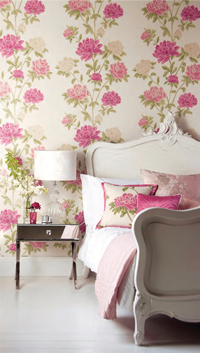
Paper cuts
The 20th century brought wallpaper into the tech sphere, as manufacturers merged paper and light to add ambience in interiors. 21st century papers are machined by varied printing techniques including digital and screen printing. Patterned wallpapers are created with “repeats,” so that pieces cut from the same roll can be hung adjoining one another; the pattern continues and the “join” is not obvious. Modern wallpapers are easy to hang and come in rolls to be adhered vertically— usually with wallpaper paste. Some papers are made of washable vinyl and come pre-glued or not; some are even removable, a plus for those who bounce around nomadically or identify as commitment-averse.
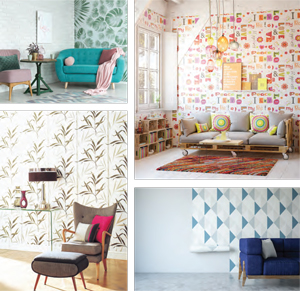
Paper chase
Local designer Moyanne Harding works extensively in central Virginia and the Roanoke Valley: her condominium project, The Lofts on Commerce, just hit the market; earlier this year she designed the St. Jude’s Dream Home in Roanoke. A big fan of wallpaper, the vivacious designer is quick to proclaim its virtues: “Wallpaper is back and stronger than ever, with all the amazing new textures and patterns designed to make your house beautiful!” Her favorite design houses include British firms Farrow & Ball, Cole & Son and Anna French. What’s on trend now? “A resurrection of pinks and burgundys along with a dark rich palette of greens and whites,” she says.
Wallpaper can play a leading role or lend support as a background player, adding dimension and harmony to home interiors.
- Textured grasscloth in a neutral tone sets an elegant stage for traditional furnishings. Philip Jeffries offers beautiful—and pricey—products; Thibaut’s are a bit more affordable. Proceed with care when choosing grasscloth: those beautiful, dimensional natural fibers can differ in shading from roll to roll; it’s important to match tones as the job progresses.
- A bright animal print lends an air of whimsy to humdrum dens and lackluster baths. At the high end design houses include Scalamandre, with patterns like Chinoise Exotique, a cheerful pattern of impish monkeys on a range of backgrounds including tomato and ecru. More economical are Cole and Son’s Savuti and Canopy Creatures by Anthropologie; both depict old-world monkeys hanging out in trees, as they do. At the low end, York Wallcoverings’ Mandarin Prose delivers the playful simian vibe at a fraction of the cost.
- For drama in the dining room, try a large-scale, vivid floral to energize gatherings and celebrations. Thibaut’s Honshu is available in a range of hues, moderately priced and sure to please. For the “wow factor,” Anewall’s extra-large-scale Dark Floral Blossom is uber-dramatic and comes in five rolls to create a showstopping mural. Easier on the budget are Big Floral from Roostery and Albany Wallpapers’ Bohemian Flower.
- For “mess-magnet” rooms—kids’ play areas and bedrooms— consider vinyl or washable wallpaper, impervious to even the most dedicated finger painters and pint-sized muralists. Schumacher’s Madame de Pompadour is a beauty and potential bank breaker; for a more down-to-earth budget, try East Urban Home in the midrange. Zoomie Kids and Brewster Home offer patterns that deliver great style for little investment. Removable wallpapers are also great for kids, and no-brainers for college students, renters and commitment-phobes; check out Drop It Modern, Chasing Paper and Urban Outfitters for fresh, modern design.
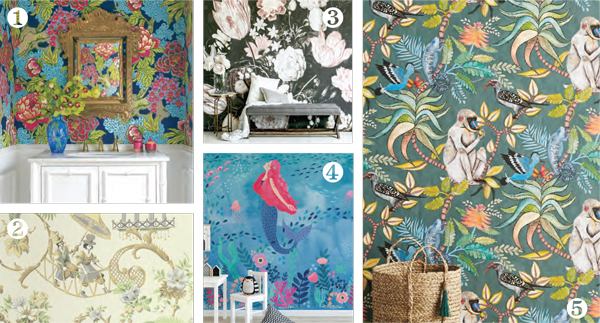
Paper plans
Take a dip before you dive. Plan a visit to your local design professional for tear sheets and memo samples of the designs that strike your fancy. Buy one roll and tack it to the wall; live with it for a week or so before you go all in. Check back at different times of the day to see how it interacts with your home’s light and decor.
Rein it in. If you’re madly in love with a particularly bright, bold or avant-garde pattern but nervous about its staying power, try it in a guest bath first. The jewel box of a powder room that emerges might embolden inspired choices in larger spaces.
Go big AND go home. Don’t be afraid of bold, colorful patterns, large-scale graphics or abstract prints in small rooms; a den may feel surprisingly intimate and vibrant against an unexpected, dramatic backdrop.
No distractions, please. In rooms with windows and beautiful views, avoid off-trend “accent” walls; opt instead for subtle, textured papers like grasscloth—tone-on-tone natural fibers in subtle textures that lend the room a feeling of warmth, keeping focus where it belongs.
Enough is enough. The journey from eclectic to chaotic can turn south in a skinny minute; plan your design itinerary carefully. Let one element lead the way: if your furniture and accessories are bursting with color and pattern, choose wall coverings that are subtle and neutral; conversely, if the decor is tailored and stodgy, a bold choice in paper might just be the secret “zing” that takes your space from staid to spectacular.
Endpapers. What to do with those last few pieces after wallpaper duty is done? Make liners for drawers, adhere to bookshelves or front faces of stairs; frame as artwork or add to door panels on a vintage hutch or armoire. Wallpaper remnants and samples are fabulous materials for ornaments, envelopes, gift wrap and other paper crafts.
There you have it, your HOME wallpaper primer. There’s no time like now to start your own journey down the paper trail. Bon voyage and happy hanging! ✦
animal print, block-printed, bold graphics, contemporary panels, digital and screen printing, dots and stripes, Features, floral, hand-painted, mess-magnet, murals, paisleys, panoramic wallpaper, scenic wallpapers, stenciled, te, tured grasscloth, wallpaper, wallpaper hangings, watercolors
